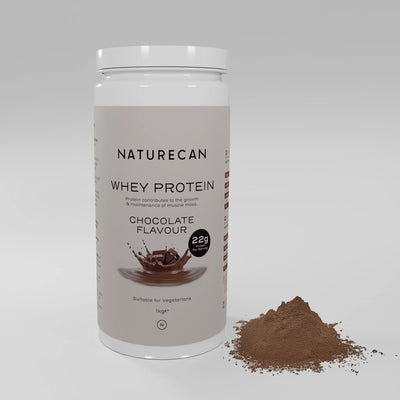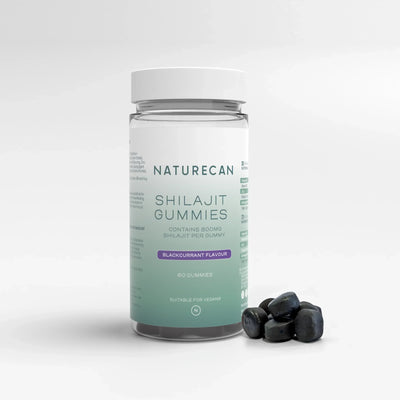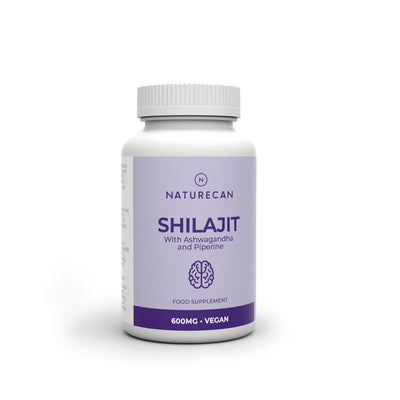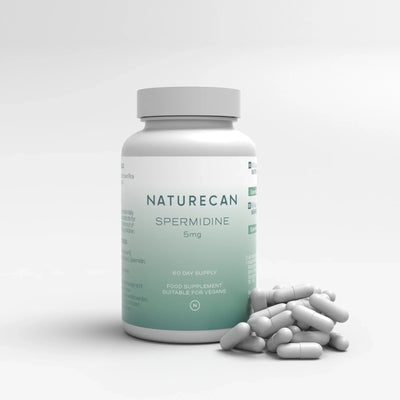What is Biohacking and what are the benefits?

What is Biohacking?
Biohacking is a contemporary concept that allows you to optimise your body’s biochemistry, metabolism and over time, your overall quality of life.
The term biohacking itself describes the tools, processes, and procedures used to positively enhance one’s human physiology and metabolic function. Such interventions include behavioural changes including sleep and diet, to embedded bio-technology.(1,2)
Several biohacking methods used today are the result of recent scientific discoveries and medical innovations. For example, it is possible to biohack your body with electronic Bio-stamps and implanted GPS systems, enabling integrated and augmented human function. (2)
Yet, there are countless examples of less intrusive biohacking tools, such as modifying your dietary patterns, sleeping patterns, exercise routine and fasting, all of which are inexpensive and easy to implement and can deliver significant health benefits.(2)
Where did biohacking start?
Although biohacking is a relatively new trend in the health and wellness industry, many practices associated with it, such as fasting, ice baths,
The concept gained significant attention recently, but the term "biohacking" dates back to 1988. Its popularity started to rise in Silicon Valley around 2005 and has continued to grow as people increasingly seek new hacks, treatments, and solutions to enhance their well-being.

The importance of Biohacking explored
In today’s world, biohacking has become an important tool to maximise your health and leverage your internal physiology and biochemistry.
Individuals with a solid understanding of biohacking techniques and their benefits have the potential to take more control of their lives.
To understand why biohacking has emerged across the Western world over the last 20 years (since the early 2000s), you only have to look at the growing concerns linked to the unprecedented rise in chronic lifestyle-related diseases including:
- Obesity
- Type II Diabetes
- Hypertension (high blood pressure)
- Stroke
- Heart Attack
- Liver Disease

These diseases significantly reduce your quality of life and lifespan, which unfortunately are further worsened and amplified by where there are elevated adipose tissue deposits (i.e., increased body fat/BMI = obesity) (4).
A recent epidemiological study conducted in 2022 across Europe, discovered that 60% of people are either overweight or obese. It was also found that America and Europe had the highest incidence of obesity (3).
However, there is HOPE! The aforementioned lifestyle-related diseases, and early death associated with them, may often be avoided through living a healthier lifestyle (4).
This is where Biohacking’s value and importance shine!
Lifespan refers to the total time an organism is alive, from birth to death. It is the maximum period that an individual of a species can potentially live under optimal conditions. Lifespan is influenced by genetic factors, environmental conditions, lifestyle choices, and advances in medicine.
While the average lifespan varies between species, humans typically have a potential lifespan of about 120 years based on mathematical methods. However, most people live to an average age lower than this due to factors like disease, lifestyle, and access to healthcare. Lifespan differs from life expectancy, which averages across a population.
The physiology of Biohacking: Integrative & cellular overview
Before diving into the various biohacking techniques, let's gain an understanding of your cellular processes and metabolism. This will ensure that these techniques make full sense and you can recognise your biological processes.
In simple terms, your body is made up of several integrated organ systems including:
- The cardiovascular system (including the heart, blood vessels, arteries, arterioles, capillaries, veins etc.)
- The lymphatic system
- The digestive system
- The nervous system
- The auditory system
- The reproductive system
Basic on Human Biology: How do cells work?
These organs work together to perform various functions. The combined goal of these organ systems is to maintain homeostasis and internal balance in a changing environment.
Building on this, an organ is made from several specialised tissues. The resulting organ then executes a specific overarching function with various sub-functions. For example, the stomach is specialised for the chemical and physical digestion of food, while communicating cellularly with other organs including the brain and gut.
Food eaten and broken down in the stomach via physical and chemical digestion can then pass through the intestinal tract, allowing the nutrients to be absorbed into the blood.
While waste matter, excess fluid and tough fibre (cellulose) are excreted by processes, occurring in the large intestine.
This organ system is known as the Gastro-Intestinal System - more commonly referred to as the Digestive System.
Understanding cellular energy metabolism
Reducing further in size, tissues are what make up the organs, consisting of specialised cells.
Cells become specialised through a genetic process called cellular differentiation and gene expression. The unique instructions encrypted within DNA, allow cells to recognise and become their destined cell/tissue, dedicated and specialised with unique properties to conduct their function (5).
That function could be an immune cell (part of the immune system) or a single neuron (in the trillion-celled Nervous system).
Understanding cellular energy metabolism is crucial, as it plays a significant role in creating new mitochondria and improving overall cellular function, supporting physical health and recovery from injuries. Additionally, maintaining cellular health is essential in preventing cellular senescence and promoting longevity.

Now that we have covered the basics of human biology and body composition, we can delve into various methods of Biohacking, the underlying biochemistry involved and the benefits it may provide.
Biohacking for longevity
Biohacking for longevity involves using various techniques, such as diet, supplements, technology, and lifestyle changes, to potentially enhance health and extend lifespan. This approach often includes personalised practices like intermittent fasting, advanced supplementation (e.g., NAD+ boosters), and optimising sleep, exercise, and mental well-being. While some methods show promise, the long-term effects and safety of biohacking for longevity are still being studied.
5 Biohacking techniques discovered
When deciding what biohacking techniques could be relevant for you, it's important to consider combining multiple techniques. Taking simple steps in the right direction can have compounding benefits over time.
DIY biology allows individuals, regardless of their scientific background, to conduct experiments on themselves outside traditional lab settings. This movement promotes open science and citizen involvement in biology, allowing for inclusivity and innovation among participants who share techniques and insights to enhance personal health and performance.
Advanced biohacking techniques such as genetic engineering, involve complex experiments like CRISPR DNA injection and telomerase gene therapy. These methods aim to enhance human capabilities but also raise significant ethical concerns. Additionally, life-saving gene therapies are becoming increasingly accessible, due to cost-effective genetic analysis tools, sparking ethical discussions about personal gene modification.
So, we recommend carefully considering your options before implementing one of the following biohacking techniques, especially if you have any medical conditions or familial history of a particular disease, in which case, please consult with your doctor.
1. Diet changes for health optimisation
Dietary changes are a key biohacking technique aimed at optimising health by influencing our body's biochemistry. One of the critical aspects of this approach is managing insulin levels, particularly by reducing hyperinsulinaemia—a condition where the body produces excess insulin in response to high blood sugar levels. Elevated insulin can lead to increased glucose absorption and storage, reducing the availability of crucial antioxidants and nicotinamide adenine dinucleotide (NAD+), a co-enzyme essential for various metabolic processes.
NAD+ plays a vital role in several cellular reactions, including glycolysis (sugar breakdown), fatty acid oxidation, and the tricarboxylic acid cycle, all of which are crucial for energy production. It is especially important in respiration and oxidative phosphorylation, where glucose from food is converted into ATP, the energy currency of our cells. Antioxidants, on the other hand, protect our cells from damage caused by reactive oxygen species (ROS) and reactive nitrogen species (RNOS), helping to maintain cellular integrity.

For individuals with obesity, reduced antioxidant function can lead to increased cellular damage over time. However, biohacking techniques like fasting and ketogenic diets can help mitigate these effects by enhancing antioxidant production, improving mitochondrial function, and raising the oxidative stress threshold. Biohacking methods such as fasting and ketogenic diets increase ketosis and ketogenesis state (2,7).
Many studies demonstrate that lifestyles with low levels of insulin lead to:
- reduced antioxidant breakdown
- increased antioxidant production
- enhanced oxidative stress threshold and mitochondrial function
Importantly, the amount of insulin released directly corresponds to dietary and eating patterns. So, some key factors to consider that affect insulin levels include:
- type of food eaten
- the time consumed
- what’s consumed at the same time
Together, these lead to healthier functioning cells and ultimately, a healthy individual overall due to the significance of antioxidant function in longevity, mitochondrial health and cellular function.

Fasting and the Ketogenic Diet: Powerful Biohacking Tools
One of the most effective ways to lower insulin levels without medication is through fasting, particularly intermittent fasting. This method induces a state of ketosis after about 16 hours of fasting, where the body shifts from using glucose as its primary energy source to burning fat stores. Other approaches, such as ketogenic diets (low-carb, high-fat), calorie restriction, and time-restricted eating, also help reduce insulin levels, although not all lead to ketosis, which is a central component of biohacking.
In ketosis, the body produces ketone bodies from fat, providing an alternative energy source during periods of reduced caloric intake. This process, which evolved as a survival mechanism during times of food scarcity, is highly efficient. Fats, when oxidised during respiration, yield more energy than glucose, providing 6 ATP, 31 NADH, and 15 FADH2 molecules, compared to glucose’s 4 ATP, 10 NADH, and 2 FADH2. This increased energy production not only supports cellular function but also enhances brain function and cognition.
Optimising Energy Through Fat Metabolism:
Fats are an incredibly efficient energy source, producing 1.5 times more ATP and significantly higher levels of NADH and FADH2 compared to glucose. Moreover, fats provide more than twice the energy per gram (9 kcal/g) compared to sugars and proteins (4 kcal/g). Therefore, a diet rich in healthy fats can optimise both brain and bodily functions, making it a powerful tool in the biohacker’s arsenal.
In short, fasting and dietary changes are a potent biohacking method, allowing you to maintain healthy cellular function, with high antioxidant levels and increased energy making you feel more awake and active, all whilst diminishing your body’s fat (adipose tissue) levels.
2. Exercise and Fitness
Regular physical activity is essential to maintaining optimal health. Biohacking can be applied in many ways during exercise and fitness, from the exercise itself to harnessing the data analytics captured on fitness trackers, which can optimise future workouts. Physical health biohacking athletes use various techniques to enhance performance and expedite recovery, including exercise, cold therapy, and red light therapy.
Tracking data is also a way of biohacking since you can measure how intense you are working by the number of calories used per time unit, or the power output during an exercise like rowing or cycling.
Exercise is considered biohacking for its positive cellular impact during aerobic and anaerobic exercise. Exercise is good for us because after completing a run or workout, mood is almost always elevated through enhanced systemic blood flow and endorphin release. Long term, exercise can stimulate heart muscle growth (cardiac hypertrophy) which increases cardiac output – the volume of blood pumped to the rest of the body by the left ventricle (9).

Research indicates that exercise is excellent for the cardiovascular system, endurance, fitness, muscular hypertrophy (growth) and strength development.
- One benefit is improved blood flow and vessel development (angiogenesis) - During exercise, the increased blood flow causes excess stress, triggering the angiogenic response, amplified by VEGF (vascular endothelial growth factor) and is released upon the contraction of our skeletal muscles (9).
- Whole-body vibration therapy - another method to enhance physical performance and facilitate injury recovery. So, just by exercise alone, you can improve your overall body function by reducing body fat and improving blood flow and overall mood through endorphins.
3. Sleep Optimisation with Sleep Tracking Devices:
Ensuring optimal sleep quality is essential for recovery and overall health. Techniques like maintaining a regular sleep schedule (including sleep and waking times), using blue light blockers, blackout blinds, and creating a sleep-friendly environment are common biohacking techniques. Sleep tracking devices are also crucial for monitoring daily sleep patterns and supporting overall energy metabolism.
Sleep is a great example of biohacking, given it is crucial for overall health and cognitive function. During sleep, the body undergoes essential processes for physical and mental restoration. Sufficient sleep helps repair muscles, tissues, and cells, strengthens the immune system, and promotes cell growth.
From a neurological perspective, sleep enhances memory consolidation, learning and problem-solving skills. It also supports emotional regulation, reducing the risk of mood disorders like anxiety and depression. Inadequate sleep impairs attention, decision-making, and reaction times, affecting daily activities and productivity.
Chronic sleep deprivation is linked to serious health issues, including obesity, diabetes, cardiovascular disease, and weakened immunity. Ensuring 7-9 hours of quality sleep each night can lead to a healthier, more productive, and mentally sharper life.
4. Nootropics supplementation: Cognitive function enhancers
The ultimate cognitive biohack for your brain, these naturally occurring, organic extracts are an excellent source of antioxidants, nutrients and vitamins.
Examples of nootropics include caffeine, omega-3 fatty acids, and ginkgo biloba. Interestingly enough, CBD also acts as a nootropic in itself.
Nootropics increase blood flow to the brain, enhancing neuroplasticity (neuronal growth), and supporting neurotransmitter function (neuronal communication). Brain biohacking enhances cognitive functions through various methods, such as increasing brain-derived neurotrophic factor (BDNF) and nootropics.
Nootropics can improve mental clarity, reduce brain fog, and enhance learning and memory. They also combat age-related cognitive decline and support overall brain health.
Brain-derived neurotrophic factor (BDNF) plays a critical role in neurogenesis and neuroplasticity, with higher levels linked to improved cognitive functions. However, it’s essential to understand and minimise potential side effects and interactions.
5. Embedded Technology & Biotechnology
Embedded tech has advanced a long way in a short space of time. We are now in the age of people with Bio-Stamps and Brain Artificial Intelligence chips, with Elon Musk’s NeuralinkTM.
This form of biohacking is intrusive and requires surgical intervention, however, embedded tech can provide a wide range of harmonious and symbiotic functions once successfully placed within our bodies.
Currently, the typical tech covers any type of implant or intervention given to the body to enhance performance and health (2). Some examples of embedded technology, developed and approached medically include electronic bio-stamps (acting like a bio-electrical tattoo), password pills and GPS-tracking systems.
However, there are also less intrusive methods to biohack your body and improve overall health and longevity, thanks to wearable technology (biotechnology). Popular examples include the Apple Watch and Garmin, which can track fitness and health output including heart rate and emergency alerts.
Another form of biotechnology can take the form of data reporting (or activity reports), to let you know how much exercise you’ve done along with key stats. App developers nowadays recognise this and develop apps, that allow you to scan food and grocery items to get an overall health ranking based on medical meta-analyses so that you can consume what’s best for you.

In addition, many people are now measuring blood sugar levels as a target for biohacking, particularly through an external glucose monitor, which sits above the shoulder. This device sends blood glucose recordings directly to a linked device, for you or your doctor to make informed health decisions.
The roundup: Which biohacking technique is best for me?
The saying “you are what you eat”, whilst not completely true, does hold some validity.
Just like a car, you must take care of it, as damage can be expensive; sometimes irrecoverable. What you put into your body matters, as does what you do with your body.
Diet is placed as our number one biohacking technique. That’s because your diet has the most profound impact and can be instantly changed, just by affirming you will make a positive change. Including essential fatty acids in your diet is crucial as they support cellular health and metabolism.
As mentioned previously, around 60% of people in Europe and America as of 2022 were either overweight or obese, and obesity is a serious risk factor for the disease. A notable takeaway is that obesity has widespread prevalence across several major developed countries (3).
Whilst a clear-cut underlying cause/mechanism of action for obesity is still contentious among the scientific community (i.e. genetic cause for obesity or environmental factors), what we do know is that when an excess of energy is consumed consistently, the body will automatically conserve this as energy reserve stores throughout the body as adipose tissue – commonly known as fat.
However, in the modern world, and particularly in developed economies, we are less active. This means the number of calories we need to maintain our body for the day is less. We are surrounded by a ubiquitous supply of restaurants, fast food, cafés and supermarkets, which can encourage over-indulgence and obesity rates.
People classified as overweight (and obese) are made vulnerable and prone to endure more serious adverse health conditions. This is because, during obesity, there is an increase in insulin concentration within the blood (hyperinsulinemia), and this elevated hormone concentration is known to reduce endogenous and internally-made antioxidants (1).
Intermittent fasting, a popular biohacking approach, can be effective for weight loss by improving metabolic function. However, it may pose risks for individuals with a history of eating disorders, and caution is advised when promoting such diet trends.
Biohacking knowledge: How to implement it
The key is to ensure you have enough information and resources to implement any of these five techniques or any alternative biohacking methods. This brief article only covers a handful of the leading biohacking techniques, there are other techniques to biohack that you can learn more about and use, such as breathwork and
By broadening your understanding of biohacking, you can begin your biohacking journey today!

Are there any risks?
Researchers typically work within institutions that ensure ethical oversight, while biohackers often operate independently without such regulation, raising safety concerns. Ethicists warn that the lack of accountability in biohacking can lead to unsafe practices, particularly when handling hazardous materials without proper safety equipment. This unregulated approach increases the risk of contamination, illness, or injury.
Additionally, following health advice from unverified sources, such as blogs or social media, poses significant risks. Therefore, it's crucial to consult a healthcare professional before trying new regimens, as some, like intermittent fasting, may be unsuitable for certain individuals or medical conditions.
Conclusion
In summary, biohacking is about making small, incremental changes to your body and lifestyle to improve overall health, performance, and well-being; leveraging science, technology, and self-experimentation to optimise physical and mental capabilities.
As we’ve seen, there are numerous techniques and it is certainly not a one-size-fits-all approach, so please consider what works for you before implementing. Given some biohacks are still in the research and development period, there will no doubt be many unfolding advances and opportunities in this life-enriching field of study.





